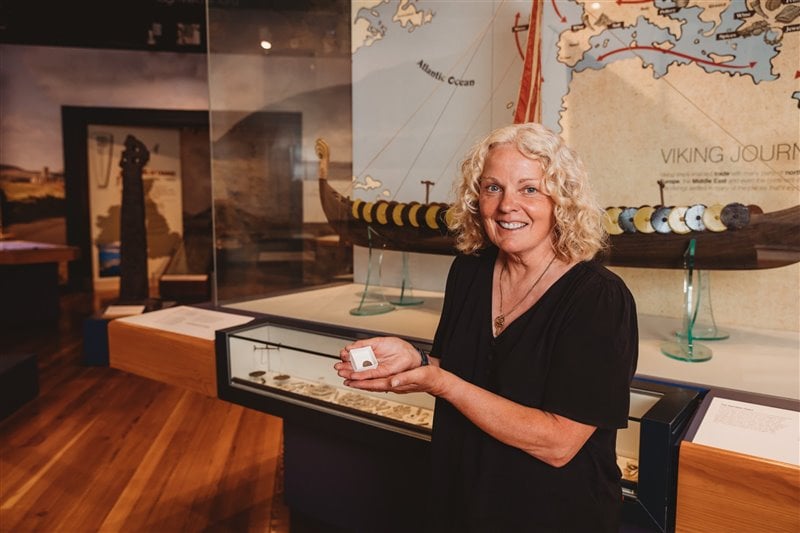
For the second time in less than a year, an amateur metal detectorist has discovered a cache of Viking treasure on the Isle of Man in the U.K.
Among other artifacts, the find contains 87 silver coins and 13 pieces of silver arm rings, known as “hack silver” or bullion.
“This is a wonderful find which helps further our understanding of the surprisingly complex Viking Age economy in the Isle of Man and around the Irish Sea area,” Allison Fox, curator for archaeology at the Manx National Heritage trust, said in a statement.
Kath Giles, who previously unearthed 1,000-year-old buried Viking jewelry on the island in December, found the treasure on a private land in April. The discovery was her fourth major find since taking up metal detecting as a hobby three years ago.
“It’s an amazing feeling,” Giles told ITV. “As soon as you uncover something like that, the emotions are incredible. You can’t believe what you’re seeing… it’s touching something that someone else hasn’t touched for a thousand years.”
The recently discovered coins were minted in Ireland, England, the Isle of Man, and even as far afield as present-day Germany.
“The new hoard might be compared to a wallet containing all kinds of credit cards, notes and coins, perhaps of different nationalities, such as when you prepare to travel overseas,” Kristin Bornholdt-Collins, an independent researcher and numismatist from New Hampshire, said in a statement.
“[It] shows the variety of currencies available to an Irish Sea trader or inhabitant of Man in this period.”
The cache of coins might have functioned like a “piggybank,” Bornholdt-Collins said. The earliest coins are from the late 900s, but the stash was likely added to from the late 1020s to about 1035. It was probably a personal savings account, representing a medium amount of wealth for the time.
Coins with the profile of King Sihtric Silkbeard, the Norse king of Dublin from around 989 to 1036 A.D. Photo courtesy of Manx National Heritage.
Some coins bear the visage of King Sihtric Silkbeard, the Norse king of Dublin from about 989 to 1036 A.D., while others feature King Cnut of England, Denmark and Norway; King Aethelred II of England; and the Holy Roman Emperor Otto of Saxony.
Some are Hiberno-Manx pieces, the Isle of Man’s earliest-known coins, minted from a die brought to the island from Dublin around 1025. One of the coins feature a “long cross” design on one side, making it easy to cut the coins in two to create a literal half penny.
The hack silver, or bullion, also functioned as a type of currency. The cut pieces would have been weighed and tested for its silver content during transactions. (The hoard’s armbands and coins are both about 90 percent silver.)
“Bullion was especially convenient for international trade since it was practical for any size transaction and was decentralized, a currency without borders or political affiliation,” Bornholdt-Collins added. “In this sense, it was a modern-day equivalent to a cryptocurrency. We might even say it was something like the original Bitcoin.”
The treasure is currently on view at the Manx Museum before traveling to the British Museum in London to be reviewed by the independent Treasure Valuation Committee.
See more photos from the hoard below.
An arm band from the hoard that was cut into pieces, known as hack silver or bullion. Photo courtesy of Manx National Heritage.
A coin from the Viking hoard bearing the visage of King Sihtric Silkbeard, the Norse King of Dublin from around 989 to 1036 A.D. Photo courtesy of Manx National Heritage.
Allison Fox, Manx National Heritage curator of archaeology, and Kath Giles, who discovered the hoard. Photo courtesy of Manx National Heritage.